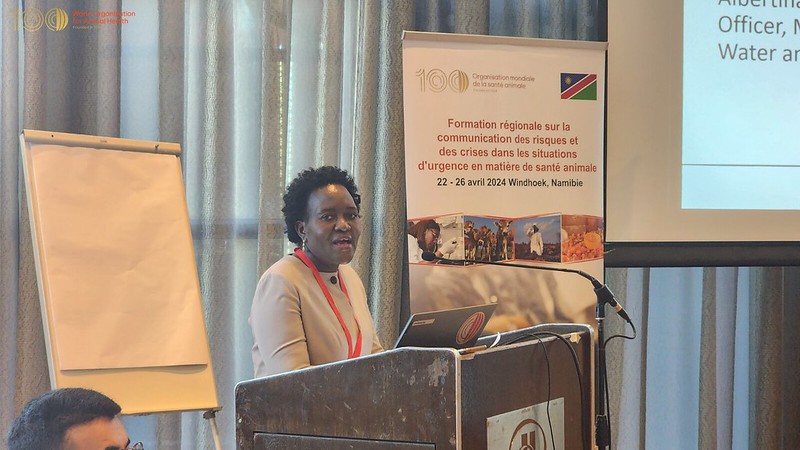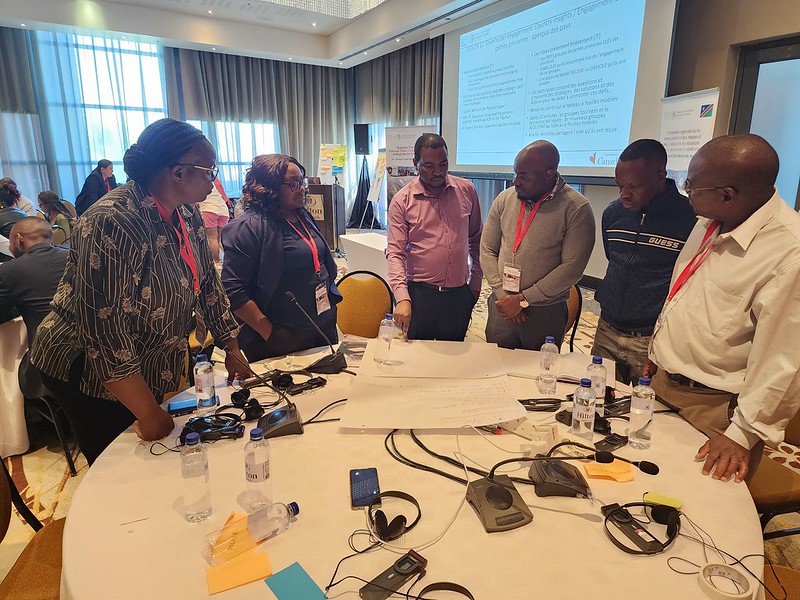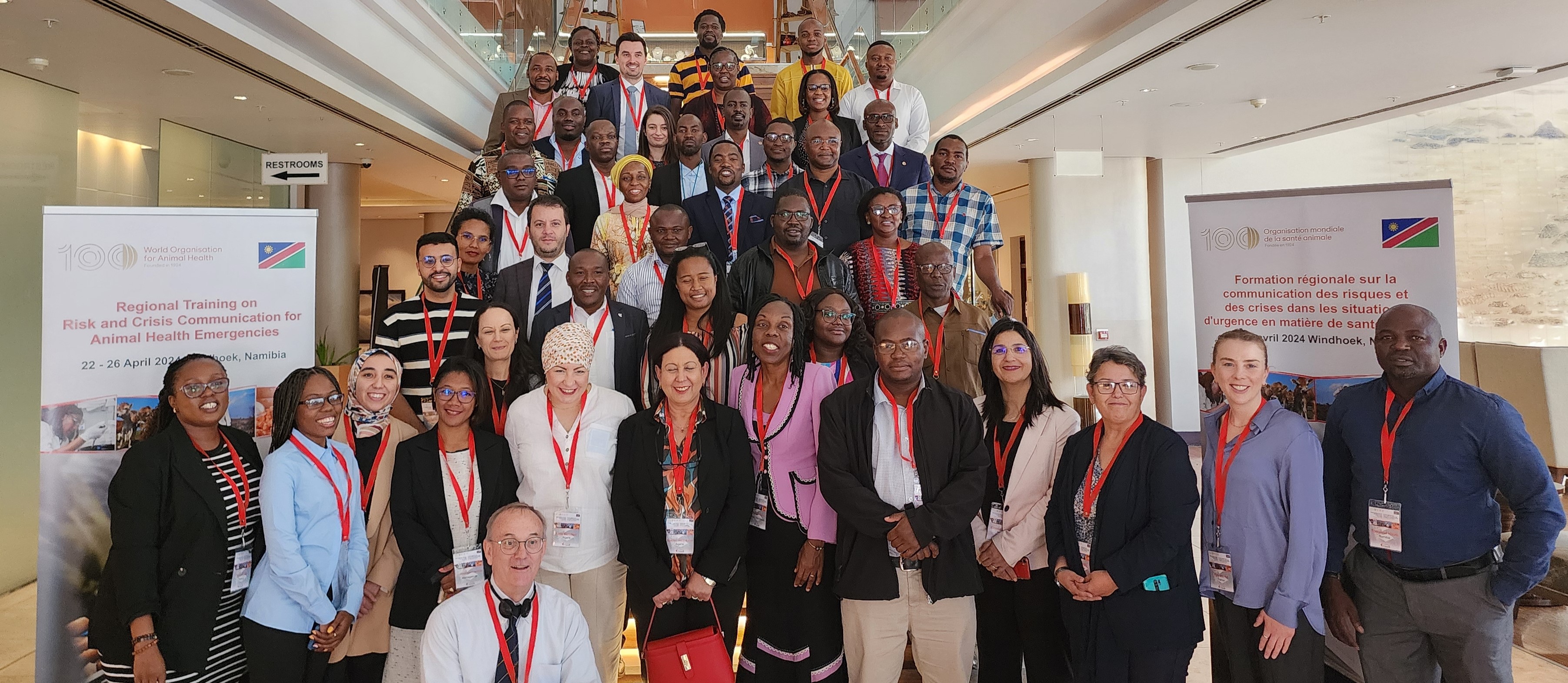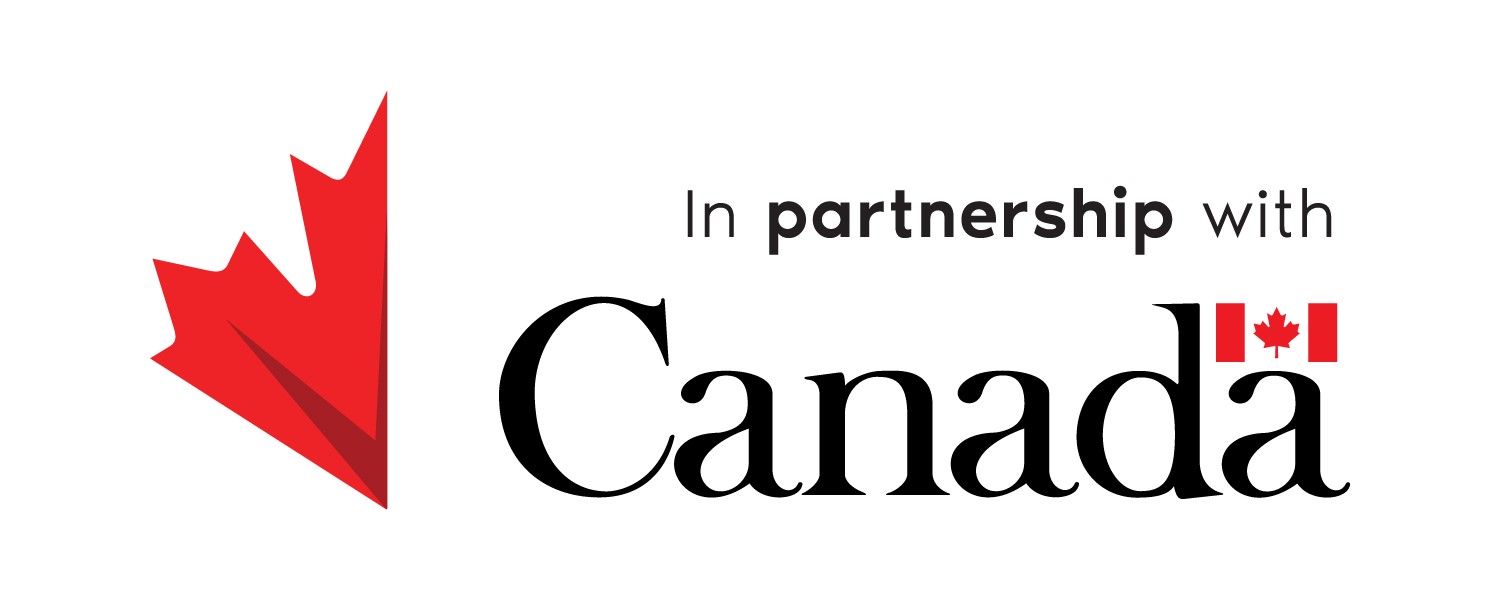
The World Organisation for Animal Health (WOAH) held a training on Risk and Crisis Communication for Animal Health Emergencies from 21-17 April in Windhoek, Namibia. This workshop was part of the Fortifying Institutional Resilience against Biological Threats (FIRABioT) Project supported by Global Affairs Canada‘s Weapons Threat Reduction Program.
WOAH recognises the importance of clear communication in safeguarding animal and human health, particularly in the face of today’s emerging threats, including those posed by deliberate biological events. Through this training, 42 animal health experts from across Africa, including representatives from Algeria, Congo (Republic), Kenya, Madagascar, Malawi, Morocco, Namibia, Tanzania, and Zimbabwe were trained. To ensure a well-rounded learning experience, an experienced facilitator, and several external experts from Africa and different global institutions led the workshop sessions.
Participants during group exercises . Picture © I. Iyadi (woah) 2024
The training emphasised the critical role that communication plays in emergency preparedness and response for animal health emergencies. The structure of the training balanced theory with practice, with group exercises and discussions following informative sessions. Each day focused on a specific theme, from crafting risk communication strategies to engaging with stakeholders and the media.
For WOAH’s Members and their Veterinary Services, effective communication is crucial to execute their tasks, which include distributing correct information, combating rumours and misinformation and disinformation, and taking rapid action during outbreaks. The hands-on approach during this training equipped participants with not only knowledge but also the ability to apply it to real-world scenarios.
Participants were able to learn about a range of essential skills for building strong communication during animal health emergencies which included:
For animal health professionals in the region, effective communication is vital for managing animal health emergencies and protecting animal welfare. Veterinary Services play an important part in risk and crisis communications during emergency response situations, whether these emergencies are the result of a natural, accidental or deliberate origin. Participants were encouraged to foster collaboration and transparent communication to promote trust and understanding among their stakeholders and partners.
The training presented a huge step forward in improving the risk and crisis communication capacities of Veterinary Services throughout Africa. By emphasising clear and effective communication, Veterinary Services and animal health experts can better protect animal health while also safeguarding public health.




